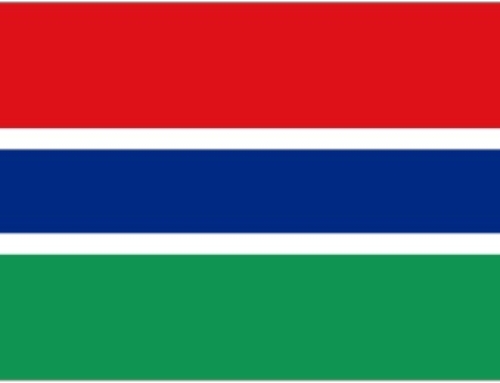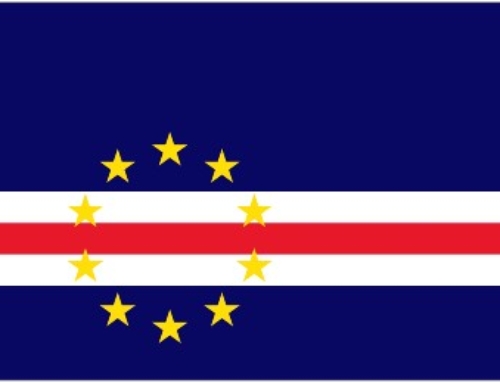
Quebec, Canada
Parlez vous Francais ? This is the most French looking, sounding and speaking major city in Canada so get the phrase book out – honestly the people are bilingual French/English mostly so there shouldn’t be a problem ! Areas of the city are like being thrown back into 16th Century provincial France as the architecture is so influenced by that period when it was under French administration. Beautiful houses converted into artisan gift shops, colourful stores painted in all colours brighten your day and the feel is of a very affluent city.
See the city walls and bastions, old gun emplacements, the historical battlefield, the gigantic St Lawrence River and the iconic Chateau Frontenac – have a drink if you can afford it there …… and just walk everywhere to see a stunning city …. loved it!
How to get to Quebec from Montreal
(This trip was part of a Canadian 5 city tour of Toronto, Niagara, Ottawa, Montreal and Quebec before I flew to a friends wedding in Chicago. Click on links for reviews on these locations).
I looked up my options of getting from Montreal to Quebec and again the bus or train wins easily. I was booking in advance so these prices may not be the same as last minute but it did get me wondering why people fly between these short distance cities …… so.
A). Express bus is 3hours 15 mins, costs $25-40 depending on timing and has reasonable comfort, centre to centre.
B). Train is 3hours 30 mins average, costs $30-51, good comfort, centre to centre.
C). Plane is 3hours 30 mins (incl security n trip to airports), costs $236 plus extra for my luggage, uncomfortable.
Train won again, I got the cheapest fare and only 15 mins longer than the bus, which may have had delays due to traffic. Once I did the trip I knew that yet again I had chosen the best form of transport because, at the sake of repeating myself again there were big comfy seats, huge windows through which to admire the passing countryside, trolley service for food and drinks and we left/arrived on time. Click here for info/schedules on VIA Rail Canada
Train to trip to Montreal.
This was going to be my last train journey, as my trip to USA – my continuation from Quebec to Chicago – was by plane due to the massive distance involved.
It has set me wondering about doing the Toronto to Vancouver trip by train as I loved these trains – so comfy, big and the world in its stunning glory going by at the window and mesmerising me as it does. That trip would take days I know but what a way to see the country and stop off a couple of times on the way …… watch this space.
Arrival at Quebec’s Gare du Palais train station meant that my hotel was only a 10 minutes walk away and what a station it is. Chateau styled exterior with the green copper roofs that I had now become so used to seeing, as a traditional feature of old Canadian buildings. It has the wonderful Place Jean-Pelletier park across the road with planted flower beds, trees, hedges and a really modern revamped central water fountain.
I was impressed and I hadn’t seen the city yet !
What to see in Quebec.
My review here generally takes you along a walk through the city and my comments on the views and places visited on the way. You can follow this route on a map if you wish, or just select the places you want to got to and head to them individually. My walks are long (you are warned! , but can be split into different days if you just finish where appropriate and reconnect back to where you left off the next day.
I found it was a gift from Ireland to Quebec as a memorial and thank you to the people of Quebec who offered help to the Irish immigrants during the great famine of the 19th century. It intrigued me to find out more so I looked it up online and here we have it – The street it is on was called Ste Helene Street but is now called McMahon Street and is apparently named after Father Patrick McMahon, the first pastor of St. Patrick’s Church, built for Irish worshippers.
The façade of the old church of 1833 still remains a few doors down the road (it burnt down in 1970) and is incorporated into the cancer research building there now. My Irish friends will be pleased that I have added this in!!!
The streets are the Museums of Quebec!
For me Quebec city was not going to be a stream of visits to museums and galleries. It has some but I had heard that the streets are the museums and just walk and take in the wonderfully restored buildings and scenery was a culture trip in itself. I absolutely loved these walkabouts and friends ask me what it was like. I can only say that the nearest point of reference I can give, is to imagine walking around an affluent, large, 17th century town in France.
Such is the influence of its French colonial past. It has left it with a legacy, not only of the language, but of the architectural influences of the day, culture, traditions and religion. Quebec was essentially a massive fort and trading post on the huge St Lawrence River and the pics I show here will hopefully convey that .
First stop was the old city walls and ramparts or the “Fortifications of Quebec National Historic Site”, to give it its full and official tourist site title.
Fortifications of Québec National Historic Site
Quebec is the only fortified city in North America with its walls still in existence and shows the huge military presence it commanded during its colonial days.
There are many buildings from the 16-18th Century along the walls and most are gun batteries, armaments stores, garrison buildings, storage houses etc. What was great here was that as you walked around there are lots of information boards. They give you information to read about what you are looking at and what the buildings were used for. Click here for further info on these fortifications.
Some are a bit long but do read them, as I found out so much that I would never have known, just by looking at the buildings.
The first one I visited in Parc de l’Artillerie and its adjacent area was the living quarters of the military commander’s house. It had been both French and English owned as the two had battled over the city.
I saw inside the Governor’s House and then walked along the battlement walls to the famous Porte Saint-Jean, a fortified gatehouse that still is open to two way traffic.
Views across from the walls are lovely and you see the predominantly old town on one side and the more modern side on the other.
Look down to the left and you will see the area that has been specially built for the horse driven tourist carts. The horses stand waiting and being fed.
To the right you will see the large hotels of the Marriott and Hilton and administrative buildings of various sizes and ages. Carry along the walls and keep those photos coming, as in this area are some wonderful photo opportunities of the embankments and beautiful buildings below.
Finally you reach Porte Saint-Louis, another bridged gateway and it is here that I descended for a diversion, before returning to continue my wall walk.
Quebec Parliament Building
My diversion takes me into the adjacent gardens in front of the Parliament building. This huge Second Empire-style building is worthy in size and grandeur of being a national Parliament Building let alone just for the Province of Quebec. It really reminded me of the Ottawa National Parliament building in its size and design. It has free guided tours in English and French but check their website here for times as they do change.
I heard that these free tours are very good and full of historical and political info for an oversee of the city and region. I decided not to take the tour as my time today was limited and there was a lot more to see today before it got dark. A walk around the gardens was needed, with its playful large fountain and several statues of various designs and was the perfect place to look up at the Govt buildings.
I noticed the many statues here and there was one of Mahatma Gandhi in a kind of peace garden area and statues of several famous Canadians. Listening out I heard the clip-clop of the horse drawn carriages passing by the gardens and then on thorough the fortified gateway.
Plains of Abraham.
From here I crossed the road with the Croix du Sacrifice on my left (a memorial to the dead of WW1 and 2 and the Korean War) and entered onto the historical Plains of Abraham. Wasn’t quite sure what this would look like in reality. I knew from history that this was a battlefield from 1759 next to the city, whereby British soldiers commanded by General Wolfe climbed the cliff at night and surprised the French and overtook the city.
I knew both the English and French commanders died of their wounds in the battle and this battle effectively paved the way for eventual British takeover of Canada. Although I could only see one small part of it (it’s massive – 2.5km long by 0.5 wide) I got a sense of the word “Plain” and it really is now just a large grassed and wooded …… erm …. plain !
There is a museum opposite if you want to find out more about the battle and area.
It is not exciting to look at but knowing its historical importance I was glad to finally see it. I wanted to see these famous cliffs that the soldiers scaled to get to the top and they were nearby.
Citadelle area
The citadelle was across the walls and I could see a lot of from outside and thus did not double back to the gateway a long way off to go inside.
I decided to walk along the pathway on top of the cliff for the views and to get a sense of how high these famous cliffs that overlooked the river were.
Yep….they were big and very steep! The fortified walls rose up against my left side and their height was huge. The views across the river from the wooded cliff walkways were magnificent and I was not expecting the river to be so wide ….. it was more like an estuary! I could see some cruise ships, tugboats and big ferry boats and it was now that I realised why this river is called a Seaway!
I carried along this walkway called “Promenade des Gouverneurs” and the views are stunning. It opens out onto a wide promenade as it comes away from the cliff and starts to incorporate city buildings to its left. One of the little interesting structures I came across was the well known Les Glissades de la Terrasse, basically toboggan slides that have been here since 1884.
Further along you come across a little wooded park – Parc des Gouverneurs and it is here that there is the memorial obelisk to General Wolfe, aptly placed near to the cliffs he scaled
Fairmont Le Château Frontenac
It not often that I have a whole review section on a hotel as a tourist attraction, (click here for hotel website), and its certainly not because I got to stay here – I wish. This 5 star hotel is possibly the iconic symbol of Quebec for its amazing design, architecture and fabulous views over the St Lawrence River !
Fairmont Le Château Frontenac was opened in 1893 by the Canadian pacific railway as an up-market hotel for its train passengers – just like the one in I mentioned in Ottawa. This turreted chateuaesque-styled building got its name from the French governor Louis de Buade, Count of Frontenac, of 1672-1698. His coat of arms are even on a wall inside the hotel.
It is said to be the most photographed hotel in the world – I would probably agree.
The long list of famous people who have stayed here – King George VI, Queen Elizabeth, Princess Grace of Monaco, Chiang-Kai-Shek, Charles de Gaulle, Ronald Reagan, François Mitterrand, Charles Lindberg, Alfred Hitchcock and Montgomery Clift, to name only a few, probably gives an indication of how it has been seen by the mighty and influential.
Statue of Charles De Champlain
A rather grand statue of the founder of Quebec Samuel De Champlain is nearby. He established the city in 1608 and many other French settlements in the New France area of present day Canada. It sits outside the hotel, in the square on the terrace, overlooking the St Lawrence River.
Holy Trinity Cathedral
This is one of the oldest churches in Quebec, dating from 1804, (click here for further info), and sits opposite the Place D’Armes in small gardens. It was the first Anglican cathedral built outside the British Isles.
Its spire was, for a long time, the tallest structure in Québec City. Its style is Georgian Palladian and some of the tress that surround it are nearly 200 years old. In fact, the Bishop’s throne inside the church is made from a tree that was blown down in a storm in 1846. In the midst of the old town, it was so quiet inside and I virtually had the place to myself on my visit.
Quartier Petit Champlain
Next day my first stop was to be an area of old Quebec that was outside the fortified walls. This area sits at the bottom of the cliffs and was effectively the old harbour/docks area. The architecture here was old 16/17th century but also somewhat more warehouse in style, with very solid looking buildings.
One way of getting down to this lower level is by coming out from Place d’Armes and onto Fort Street, turn right at the statue and onto the downwards curvy road, Cote de la Montagne.
This leads to the lower area and at the second curve in the road will be some steps that lead you onto the main shopping but historical street of Petit Champlain. This street is full of pretty houses from the 1700’s that have been converted to restaurants, shops for art and craft, tourist trinkets, clothes etc but very well maintained. It is also very full of tourists, as it really is a main attraction.
Walk to the end of the street and turn left and walk kind of back on a parallel street towards the large grouping of houses ahead. You will reach a small horseshoe shaped street of beautiful old buildings. Keep looking up, as at various points on this walk, you will be able to see up to the battlements and the funicular train route, that is another cute way to get down here.
Now head for the quayside. You can get some great pics of the opposite bank and now you are very near the huge waterway and the docked ships.
Place Royal.
Turn left and back into the main area, as there is one wonderful aspect to see – the Place Royal. This has a church – Notre Dame des Victoires and beautiful buildings in a 17th century town square setting which, I felt,was quite unique for its attractiveness.
I think this is one of the places in Quebec that won me over and turned me into an admirer of this amazing city. This whole area is beautifully atmospheric. My advice, just wander the lanes and streets and take it all in.
Look out for the several trompe l’oeil murals on the side of buildings. Artistically done and often not seen as they depict street scenes or imitation sides of houses, that you think are real.
I wandered yet more streets, came across a street artist playing a huge Australian didgeridoo and yet more affluent art shops selling everything, from wine, to food, to paintings.
Vieux Quebec / Old Town
We are now really in the old town as street upon street here is like stepping back in time. Buildings are elegantly restored and the French rustic style comes back again. I wandered the many street just looking in amazement at each turn of the road as there was yet another perfectly maintained historical street.
I have put the myriad of photos of houses and streets here to give you an idea. If you are in this area, there is no set pattern to walk, just get lost and enjoy, as all streets come back on themselves !
Flight Quebec to Chicago.
My trip had ended in Quebec and it was one of the highlights of the whole Canadian journey. Next day I headed for the small airport and was advised that taxi is the best option as the bus was not reliable. Hotel got me a good deal, it arrived on time and got me there with ease.
The next part, was a flight to Toronto and then a transfer onto a small aircraft for the flight from Toronto, to the wedding I was to attend in Chicago. I have put pics of the little plane that took me from Toronto to Chicago, as we landed at Billy Bishop Airport, on the island off the waterfront of Toronto.
We fly in and out past the skyscrapers – my Toronto review here, describe this airport. In Toronto,I went on a water boat and saw the planes coming in overhead – and here I was about to go on one of those planes.!
Sept 2016.
Below are some related posts on nearby places to visit. Click on the pic to view.































































































I can definitely see why the streets of Quebec are the museums itself. With tons of historical buildings, statues and cathedrals, it’s a walking history exhibit!
That should be its new city logo – “walking history exhibit”, I like it. It was a very affluent city and the only one I found much more expensive that the norm for everything. …. but I still loved the place. The first city I saw where public signs etc are in French first and English second!
I am still toying with the idea of moving to Canada, maybe it will work out. Thanks for the post.
Sounds like a good choice. I would move there for sure if I had the chance. Toronto would be where I’d love to settle.
What a great visit you had. As a Canadian, I have to admit I expected more from the Plains of Abraham, too! On the other hand, the first time I climbed the stairs along the cliff, I realized what a feat Wolfe’s men accomplished. I can’t imagine how the soldiers got up there with packs and weapons.
The train service west isn’t as easy (or inexpensive) as along the corridor you travelled but it has stunning views along the way.
Yes, the Plains of Abraham were rather ….. plain. But it all happened there!
Interesting to know that train services to the west are more expensive n difficult. I wonder why that is.?
You’re so right when you say the streets of Quebec are like a museum – the architecture is amazing. The parliament building and Fairmont Le Château Frontenac are grand in both construction and scale! In contrast, the Quartier Petit Champlain, Place Royal and old town are very pretty indeed and we would certainly enjoy wandering through the streets there. Great info about using the train – I feel that a train journey would be a really lovely way to explore Canada. Thanks for introducing me to so many fascinating cities in Eastern Canada.
Quebec really does feel like a step back into teh past of hundreds of years ago. It was an aspect that I wasn’t expecting and thus enthralled me even more.
The city does have a more large town feel in the Old Quarter than a city. Train is my favourite means of transport and in Canada it was always so clean, efficient and comfortable- I’d recommend it.
Wonderful post again here. Nice to know you can visit from Montreal by train. So many things to do which look fun. The Quartier Petit Champlain has caught my eye here and it is a similar style to European architecture which I do like. I always think about Toronto or Montreal when I hear Canada but this shows how nice the other cities are.
Quebec really is quite unique in North America, as it is such a well restored and maintained historical city with ancient buildings steeped in history. Canada always reminds me of modern cities but Quabec certainly bucks that trend.
Thanks for reminding me what a beautiful city Quebec City is. I believe that Fairmont Le Château Frontenac could be the most photographed hotel, too, as the architecture and location are both so stunning. I love that one building in Quartier Petit Champlain with the interior mural on its side, very cool. The Plains of Abraham may not be much to look at, but what happened there dramatically changed the future of Canada. I remember standing there as a kid and thinking of the power that place held.
(PS: Doing the train from Toronto to Vancouver is a dream of mine, too)
Quebec certainly impressed me, I was just not expecting the 17th Century streetscapes and those majestically old buildings. That wall mural made me look twice to check if it was real or not – expertly painted and the type of street art that I adore. you do feel the history of the city and indeed Canada as you walk around – I could have spent hours more just wandering the streets and taking in the views.
That Toronto to Vancouver train ride is also one of my dreams- I have friends who live in Victoria, near Vancouver.
I’ve been to Montreal a few times, but haven’t made it up to Quebec yet – I don’t think I realized that it’s only a 3.5 hour bus or train ride. That’s definitely doable. I love all the architecture there – sounds like a great place to just wander and get lost. I’ll definitely have to try to add a day or two there when I visit Montreal again.
The train service on this route is so comfortable and affordable, so taking it would be such an easy thing to do. The city impressed me and is much bigger than I was expecting.
Quebec City is probably the top place on my Canadian bucket list to visit. I feel like a bad Canadian for not having visited yet. I absolutely need to stay at the Fairmont, what an incredible Chateau. The old Town streets, shops and restaurants would hold my attention for days I think, it all looks so idyllic and European – almost like you’re not in Canada anymore. I didn’t realize it was so close to Montreal. Now I’m mad I didn’t go there when I visited a few years ago. Time for another trip I think
Yes, pity you didn’t get to Quebec as it really is quite a unique Canadian city. I felt very at home due to its very 16/17th Century European ambience with those fabulous historical buildings. I did spend a lot of time just walking the streets and taking in the feel of the place as history is still alive on its streets.
I can see myself walking through the streets of Quebec. I had no idea that it had so much heritage and so many interesting things to see.
One of the places that caught my attention was definitely the Quartier Petit Champlain. What a charming place and full of charm.
Thank you for making this amazing city known!
Whole sections of the city are like walking back in time and have been marvellously restored and maintained. I was feeling quite at home in the 17century setting of some of the streets, as if I was whisked back to provincial France. I took time to just wander the streets and lanes and came across so many beautiful buildings, that whilst not famous in themselves, were such little architectural gems.